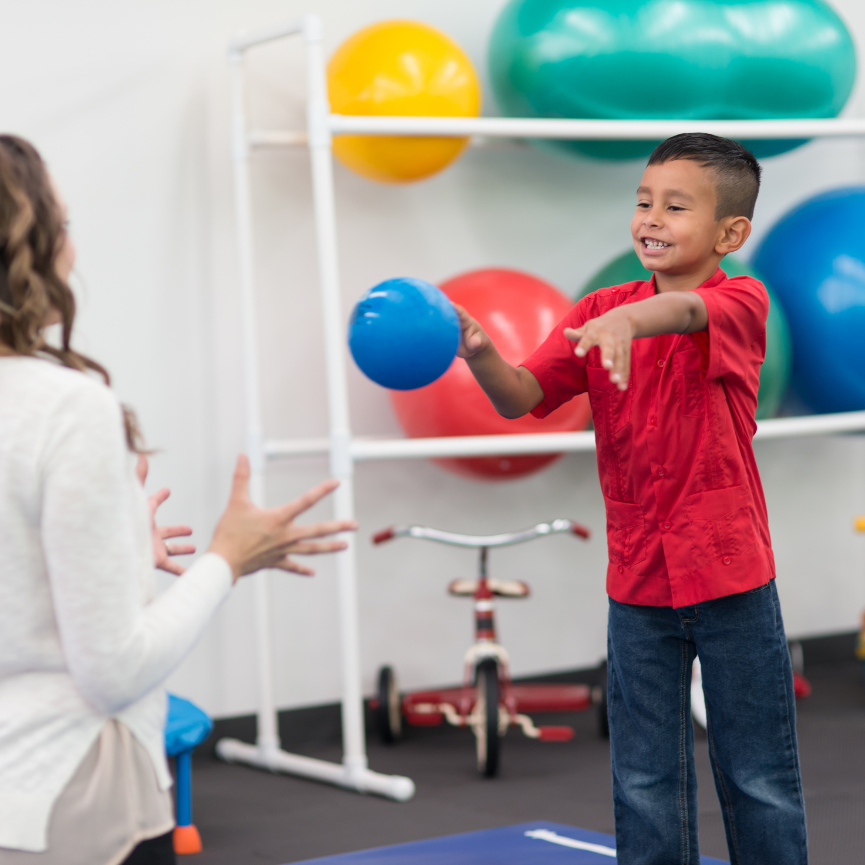
- May 21, 2024
- 159 Views
- 0 Comments
Physical Therapy For Autism: Movement Is Necessary
Physical therapy is frequently given to autistic children since mobility issues are prevalent in ASD (autism spectrum disorder).
Higher-level motor skills may be difficult for children with ASD to master. These abilities influence the child's general involvement in group activities and community involvement, which in turn influences their overall development. But don't lose hope—physical therapy could be able to help!
Children with Autism Spectrum Disorder (ASD) experience issues with their motor skills and capacities in addition to behavioral, sensory, and social-emotional challenges.
Early developmental milestones like sitting, crawling, and independent walking may be accomplished by children with ASD within the anticipated time limits, but their development may lag or their motions may be of worse quality than those of their peers.
Exercises and activities used in physical therapy include those that enhance balance, posture, and strength while also developing motor abilities.
To play with other kids more effortlessly, this kind of therapy seeks in assist a youngster in developing muscle control and strength.
Physical therapists, who specialize in movement, assist children with ASD in acquiring fundamental and gross motor skills.
These abilities support children with ASD in engaging in physical education, participating in activities and sports, and reaching their full potential.
A child with ASD may experience the following challenges:
- Delayed achievement of gross motor milestones
- Difficulty with throwing, catching, kicking, or dribbling a ball
- Jumping, hopping, or skipping
- Playing games or sports and keeping up with their peers
- Participating in community recreational or sporting programs
- Learning new physical skills
- Sitting in a chair properly, or for very long without fidgeting
- Poor posture
- Clumsiness or frequent falls
- Toe walking
A child with ASD may face motor challenges:
- Low muscle tone: Our muscles' level of activity while at rest is referred to as muscle tone. Because they need more effort and strength to move, children with ASD frequently have low muscle tone, which changes the sensory information a kid receives through their muscles when they move. Problems with motor planning make it difficult for the youngster to plan, coordinate, and execute movements correctly. This is frequently perceived as clumsiness, a propensity to fall, poor balance, or a lack of coordination.
- Low core strength: In addition to having low muscle tone and trouble with motor planning, children with ASD frequently have weak core muscles. Children with ASD struggle to use their core muscles in the right ways and lack the stamina and strength to use these muscles during functional activities.
- Poor posture: In addition to having an adverse effect on a child's ability to acquire more complex motor abilities and fine motor skills, this frequently results from low muscle tone and inadequate core strength. It can also have an adverse effect on a child's attention and engagement in the classroom or at school. Tight muscles and joints emerge as a result of inadequate posture and motor skills.
- Poor or ineffective balancing reactions that take longer to develop: They include the child's reflexive responses to maintain their standing when they begin to lose their balance and their automatic defensive responses to shield themselves from harm when they fall. A pediatric-trained physiotherapist will evaluate the child's overall motor performance, pinpoint the underlying issues, and offer an intervention plan to help treat or ameliorate these issues and, as a result, the child's functioning in general.
Benefits of physical therapy:
- Improvement in daily routines at home and school
- Acquiring new motor skills
- Development of better coordination and a more stable posture
- Improvement in play skills, such as throwing and catching a ball with another person
- Development of motor imitation skills (learning by copying others' actions)
- Increased fitness and stamina
Physiotherapy intervention strategies include:
Specific exercises or activities for muscle strength, posture, endurance, motor planning, and balance reactions.
Sensory feedback strategies to improve a child’s awareness of their body posture and movements.
Recommendations for taping, orthotics, and/or other bracing or positioning strategies and equipment to enhance the child’s body alignment, posture, and body awareness during functional or physical activities.
Recommendations and support to participate in community-based physical activity programs that will support their physical skills and endurance.



Comments - 0 comments till now